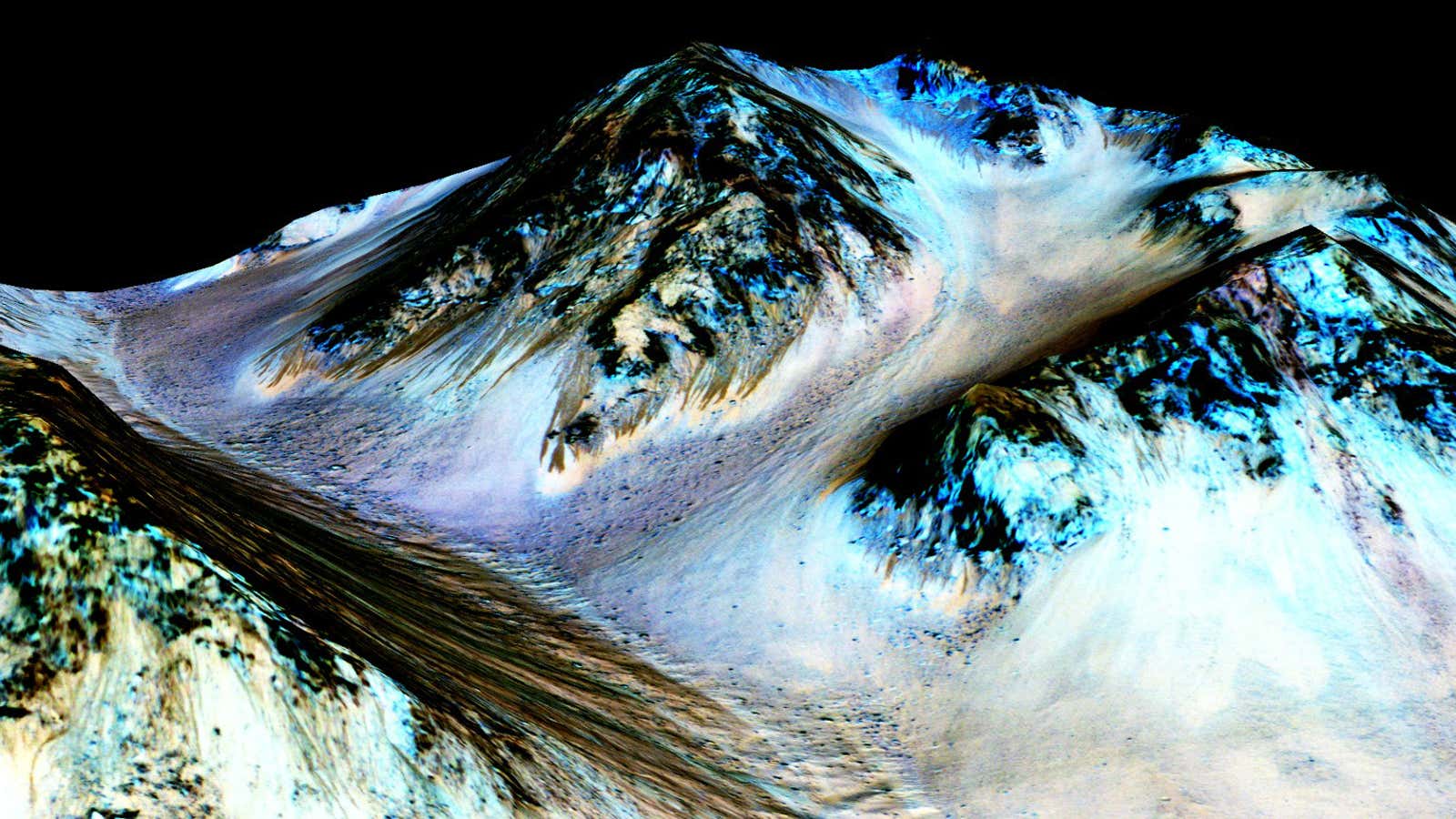New satellite imagery of jagged swaths of Mars’ surface has revealed the existence of massive bodies of water ice, a possible prelude to exciting new discoveries about whether life ever existed on the planet.
The images were taken and transmitted back to Earth by the Mars Reconnaissance Orbiter. The 4,800 lb (2,200 kg) spacecraft launched in 2005 to broaden our understanding of Earth’s celestial neighbor, looks like a humongous, winged insect, and has a wide range of imaging and sensor equipment aboard. In this case, it transmitted rich 3D images showing where the Martian surface has eroded in at least eight different regions to reveal ice underground.
The images show what researchers have identified as massive sheets of ice between and around steep slopes called scarps; some of the ice sheets are believed to be about 100 meters (330 feet) thick, going about as a deep as a football field is long. Some of them start as close as one meter below the planet’s surface. The findings were published today (Jan. 11) in the journal Science.
Life on Earth requires liquid water to survive and flourish, and researchers suspect those same conditions might exist (or have existed in the past) on other planets, though none have been confirmed. Scientists studying the Martian surface have long theorized that liquid water might exist on the planet, which would make the Red Planet one of the best candidates to have ever hosted life as we know it.
In 2011, the Mars Reconnaissance Orbiter sent back images of strange dark streaks on some slopes of Mars, news that reverberated throughout the scientific community, many members of which postulated that the geological feature could be a sign of flowing water. Fours years later, scientists presented evidence that the streaks were caused by hydrated minerals that flowed down the slopes in the Martian warm seasons. “The detection of hydrated salts on these slopes means that water plays a vital role in the formation of these streaks,” Lujendra Ojha of the Georgia Institute of Technology noted at the time.
That, however, has not yet been confirmed. A 2017 study made a compelling case that the streaks are actually formed by flowing sand and dust, not liquids. If there is water on Mars, it likely comes from water vapor—there are very low levels of the stuff in the atmosphere—or underground ice.
The new high-resolution images are the first to give scientists a clear sense of vertical characteristics of underground ice on Mars. They confirm previous theories that Mars holds super-thick sheets of ice, layered on top of each other, and will help scientists unravel the history of water and ice on Mars, says Colin Dundas, a researcher on the project.
Mars (over time periods of millions of years) wobbles on its axis; present day, it’s at about 25°. The study proposes that during periods of Martian history when the planet was tilted more like 35°, and the poles were hotter than today, snow fell on Mars. That snow, over many years, has been compacted and “transformed into massive ice sheets, now preserved beneath less than 1 to 2 meters of dry and ice-cemented dust,” according to the study.
These ice-rich deposits are “geologically young,” the study authors write, though Dundas adds that they “can’t date these very precisely at this point.” More research needs to be done, but the ice sheets could act as a record of the climate history of Mars.
“The takeaway is that we have a new window into Martian ice underground,” Dundas says.
Scientists now have their work cut out for them. As they continue scanning the surface of Mars for other regions with ice, they hope to compare the conditions of differing regions to get a better understanding of how each spot is unique. Then, considering the regions in totality, scientists will try to come to conclusions about Mars’ climate more generally, giving us a better understanding of the Martian surface.
